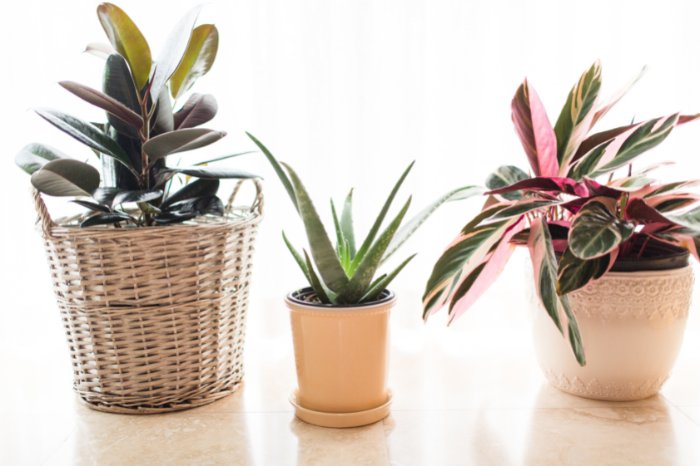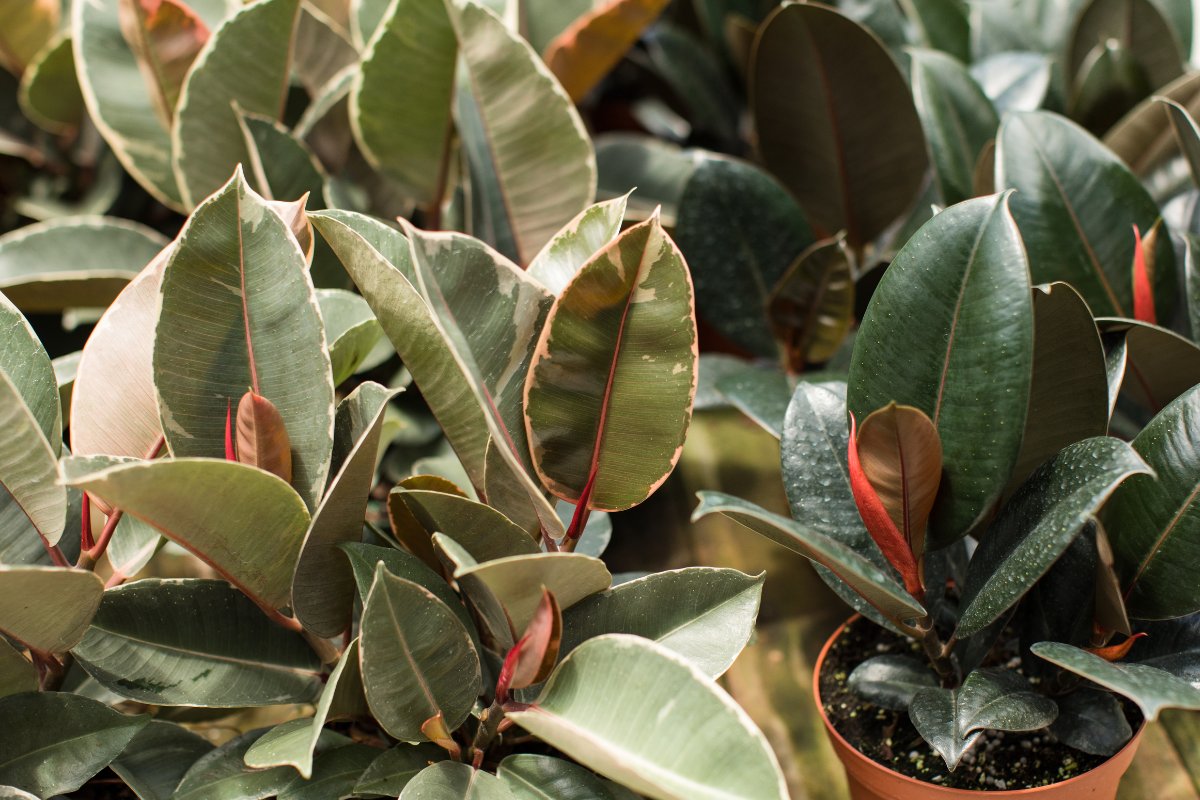Rubber plants can make a beautiful addition to any home. Before you get planting, you should take the time to learn about the best soil for rubber plants. Having the proper soil will allow your rubber plant to flourish and grow strong.
Whether you grow them indoors or outdoors you will want to provide the best conditions for your rubber plant. While it does take some experience to grow, rubber plants can be very rewarding to grow. They can make great houseplants that add a touch of elegance to any room.
What Is A Rubber Plant?
A rubber plant is an evergreen tree that is native to the tropic regions of Southeast Asia. Rubber plants are known for their oversized, oval-shaped leaves that are a stunning green color. They are long-lived plants that are often grown indoors as houseplants but can also be grown outdoors as well.
Rubber plants are grown in USDA zones 10-12. They thrive in bright light and do their best when the light is diffused. Direct afternoon sunlight can be harmful to the leaves of the plant. The soil should be kept moist and they will do best in temperatures between 60 to 75 degrees Farenheit with moderate humidity.
When growing indoors, it is best to keep your rubber plant near a southern or eastern window. Be sure to put the plant a few feet away from the window to prevent it from getting direct sunlight. It is important to note that the rubber plant is toxic to dogs and cats.

How Big Do Rubber Plants Get? – Best Soil For Rubber Plants
When grown in the wild, rubber plants can grow as tall as 50-100 feet. However, when grown indoors they can get as tall as six to 10 feet tall. They can make a great accent piece in your room as their large size adds a nice presence.
Rubber Plant Soil Mix
Having a good soil mix for your rubber plant is very important for its health. It is typically recommended to use well-draining and well-aerated potting soil for your rubber plant. An example of a good mix is one part peat, one part pine bark, and one part coarse sand (or perlite).
While you can make your own soil mix for your rubber plant you can also buy soil mix that is designed to meet the needs of plants such as rubber plants and other similar tropical plants.
Best Soil For Rubber Plants
Fortunately, there are several great soil mixes you can use for your rubber plant. Each of these soil mixes will provide your rubber plant will help it to grow healthy and strong. They also work great for other houseplants and tropical plants as well.
1. Miracle-Gro Indoor Potting Mix
The Miracle-Gro Indoor Potting Mix is one of the best choices of soil mix for your rubber plant. It comes at a great price and you can use it on a variety of different container plants including the rubber plant. It is an easy-to-water formula that can feed plants for up to six months.
The soil mix is formulated to reduce the number of gnats on your plant. It contains coconut coir which is a great ingredient to help maintain moisture.
2. Miracle-Gro Tropical Potting Mix
The Miracle-Gro Tropical Potting Mix is specially formulated for tropical plants such as the rubber plant. It is packed full of special nutrients that are designed to feed tropical plants for up to six months. This mixture can be used for both indoor and outdoor plants.
The soil mix includes lava rocks for ideal drainage. In addition, the formula is less likely to attract fungus gnats.
3. Fiddle Leaf Fig House Plant Soil Premium All Purpose Blend
While this plant may be designed for fiddle leaf fig plants, it also works great on other plants such as rubber plants. The mixture includes peat, sawdust, coarse sand, and pine bark. It promotes optimal damage for healthy plants.
The mixture holds moisture well while still allowing for the appropriate amount of drainage. It provides proper plant support while also optimizing fertilizer absorption.
4. Jessi Mae – Tropical Plant Potting Soil
This tropical plant potting soil is versatile and is a solid choice for rubber plants. It includes vermiculite, perlite, compost, worm castings, and peat moss to promote larger root systems.
This mix encourages air porosity and water drainage for the best environment for your plant. It provides important minerals to improve plant growth.
The Best Pot For Rubber Plants
A pot for a rubber plant should give it plenty of room to move. Porous pots like terra cotta make a great choice for growing rubber plants. Start with at least a three-gallon pot and continue to get bigger ones as your plant grows.
When To Repot A Rubber Plant?
With the right conditions, rubber plants can grow quite quickly. You should repot your rubber plant every year until it reaches your desired size. If reporting becomes difficult due to the large size of the plant, remove the first few inches of potting soil and then replace it with new potting soil.
Choosing The Best Soil For Rubber Plants
Rubber plants can make fun, exciting, and beautiful house plants in your home. Though they can be a bit tricky for beginners, with the right care and attention they can make great plants to grow as you can enjoy their beautiful looks.
It is important to choose the right soil for your rubber plants in order for them to be successful. The soil should be a well-draining and well-aerated potting soil. Look for something along the lines of one part peat, one part pine bark, and one part coarse sand (or perlite).
Keep your rubber plant somewhere where it will receive bright diffused light. Keep the soil moist and aim to maintain temperatures between 60 to 75 degrees Farenheit with moderate humidity. Repot your plant yearly until it has reached your desired size.
Do you have any questions regarding the best soil for rubber plants? If so, please ask any questions regarding rubber plant care in the comments below.





